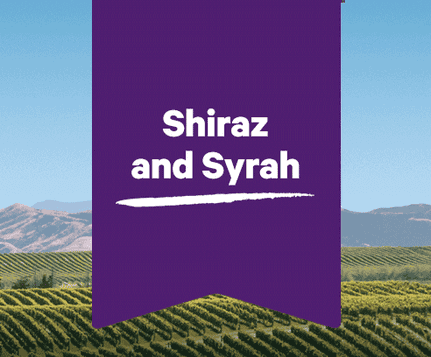Guide to Sauvignon Blanc
Discover why this dry, fresh, zesty wine is our most popular—and how to choose your next delicious bottle.

In New Zealand, we’re spoiled for choice with an abundance of delicious, unique, and affordable Sauvignon Blanc (fondly known as ‘Sav’). But with so many labels to choose from, finding the perfect bottle can feel overwhelming.
This guide will help you know what to expect from a good Sav and what to look for, making wine shopping a breeze.
Sauvignon Blanc flavours, taste and tips
| |||
Zesty lime | Green apple | Passionfruit | White peach |

Storing and serving
|
|
|
Before serving: | Once opened: | Serving: |
| Store in fridge or a cool, dark place, at 7-13°C. Enjoy within 5 years of harvest. | Store in fridge and drink within 3-5 days. Or 2 weeks if used for cooking. . | Best chilled. Put in fridge or ice bucket 2-3 hours before serving. |
Sauvignon Blanc average nutrition in 150ml glass (1 serving)
Alcohol 12.5% - 13% | Calories 84 Calories | Sugar 0.6 grams | Carbohydrates 3.8 grams |
How much do I spend?
Expect to spend around $14 to $30 for a good quality Sauvignon Blanc. Read our wine pricing guide for more.
What's a good Sauvignon Blanc to buy?
1 / 0
Sauvignon Blanc compared to other wines
Body: Sauvignon Blanc is light-bodied, crisp, and refreshing. Pinot Gris is medium-bodied and slightly richer.
Acidity: Sauvignon Blanc is more acidic, giving it a zesty, sharp feel. Pinot Gris on the other hand has moderate acidity, which experts say is softer and smoother.
Dryness/sweetness and taste: Sauvignon balance is typically dry with bright, citrusy flavours. Pinot Gris, can range from dry to off-dry, often with more subtle sweetness and fruit-driven flavours like pear or stone fruit.
Body: Sauvignon Blanc is light-bodied, crisp, and refreshing. Chardonnay, on the other hand, ranges from medium to full-bodied, often with a richer, creamier texture, especially when oak-aged.
Acidity: Sauvignon Blanc is highly acidic, offering a zesty, sharp feel. Chardonnay typically has moderate to high acidity, but is smoother and rounder, especially in cooler regions of New Zealand.
Dryness/sweetness and taste: Sauvignon Blanc is almost always dry with bright, citrusy flavours. Chardonnay is also typically dry, but can have richer, toasty notes and a more tropical fruit character, particularly when aged in oak.
Body: medium-bodied, often with a slightly fuller texture than Sav.
Acidity: Sauvignon Blanc is highly acidic, providing a zesty, sharpness. Chenin Blanc also has high acidity, but it tends to be softer (experts call this ‘rounded’).
Dryness/sweetness and taste: Sauvignon Blanc is typically dry with bright, citrusy flavours. Chenin Blanc can range from dry to off-dry or even sweet, often showcasing flavours of apple, honey, and stone fruits.
Body: Sauvignon Blanc is light-bodied, crisp, and refreshing. Chablis (made from Chardonnay) is also light to medium-bodied, but is more mineral-driven.
Acidity: Sauvignon Blanc is loved for its high acidity, and zesty, sharp feel. Chablis also has high acidity, though it tends to be slightly softer than sav.
Dryness/sweetness and taste: Sauvignon Blanc is typically dry with bright, citrusy flavours. Chablis is also dry but leans more towards green apple, lemon, and minerals, often with a more restrained fruit profile.
Body: Sauvignon Blanc is light-bodied, crisp, and refreshing. Pinot Blanc is medium-bodied, offering a creamier texture (wine experts call this ‘rounded’).
Acidity: Sauvignon Blanc has high acidity, giving a zesty, sharp feel. Pinot Blanc has moderate acidity, giving it a softer, more balanced acid feel.
Dryness/sweetness and taste: Sauvignon Blanc is typically dry with bright, citrusy flavours. Pinot Blanc is usually dry, but with subtle fruit flavours like apple and pear, often with a smoother, slightly less tangy taste.
Looking for something red?
Read our red wine varietal shopping guides.
1 / 0
Sauvignon Blanc FAQs
Some Sauvignon Blanc is fermented in oak barrels, giving the wine a softer, more mellow flavour imparting a vanilla note and a creamy texture.
Sav that’s passed its best will have more of a golden-brown hue and lost the bright, vibrant fruit aromas. The taste on your palate will be flat, dull and tired.
Once opened, Sauvignon Blanc should last three to five days upright in the fridge, without deterioration. The more wine in the bottle, the longer it will last.
If you’re cooking with it - and not drinking it, it can be OK to use for up to two weeks.
Yes, the high acidity in Sauvignon Blanc makes it a great wine to cook with.
Steamed mussels in a blend of Sauvignon Blanc and salted water is a winner. It’s also great to use Sauvignon Blanc instead of vinegar when making oil and vinegar salad dressing.
Remember to always use decent wine when cooking. If you wouldn’t drink the wine yourself, then don’t add it to food.
France: The Loire Valley is known for growing some of the best Sauvignon Blanc. The cool weather here makes the wine fruity and crisp.
Chile: Chile's top Sauvignon Blanc comes from regions like Aconcagua, Casablanca, San Antonio, and Leyda Valleys. There are also great wines from Colchagua and Elqui Valleys, where vineyards sit in sunny, sheltered spots.
South Africa: Near Cape Town, the soil and coastal winds create perfect conditions for Sauvignon Blanc. These wines are often zesty and grassy, similar to New Zealand’s, with a hint of grapefruit.
United States: While the East Coast makes great wine, California and Washington are standout regions for Sauvignon Blanc.
Australia: In Australia, Adelaide Hills and Margaret River are key areas for Sauvignon Blanc. These cool, sunny regions benefit from the ocean breeze, creating great growing conditions.
Moldova: Northern Moldova is ideal for Sauvignon Blanc, thanks to its long, mild seasons and dry autumns. The sunny valleys help produce strong grapes.
History of Sauvignon Blanc
Sav catapulted New Zealand onto the global wine stage, celebrated for its quality and unique flavours. It’s no surprise that it’s the most produced wine here, and our top exported varietal.
Local Sauvignon Blanc is known for its vibrant fruit aromas and punchy freshness, and distinctive zesty gooseberry and tropical notes. Slight variations in flavours occur depending on the region.
The story of Sauvignon Blanc’s production in New Zealand is fascinating. It all began in 1969 when two brothers, Ross and Bill Spence, planted Sauvignon Blanc grapes commercially in West Auckland, founding Matua Valley Wines. They produced their first 400 bottles of Sauvignon Blanc in 1974.
Around the same time, another pair of brothers, Mate and Frank Yukich, recognised the potential for Sav in the Marlborough region (top of the South Island).
The Spences from up north generously provided them with 10 cuttings, leading to the production of 35,000 plants. This gave birth to Montana Wines, now known as Brancott Estate, New Zealand’s largest wine producer today.
In the 1970s, wine journalist Bob Campbell ONZM MW famously described our local Sauvignon Blanc,
“It’s like being strapped to Elle McPherson while bungee jumping into a bottomless pit of fresh gooseberry leaves.”
This hilarious description helped attract English consumers, marking the beginning of a global wine sensation.
Sauvignon Blanc has been grown throughout France for centuries, traditionally in the Bordeaux and Loire regions (the same places Cabernet Sauvignon and Cabernet Franc were first grown).
The purest forms (like what we have here in New Zealand), were originally from the Loire Valley regions of Sancerre and Pouilly Fume.





































